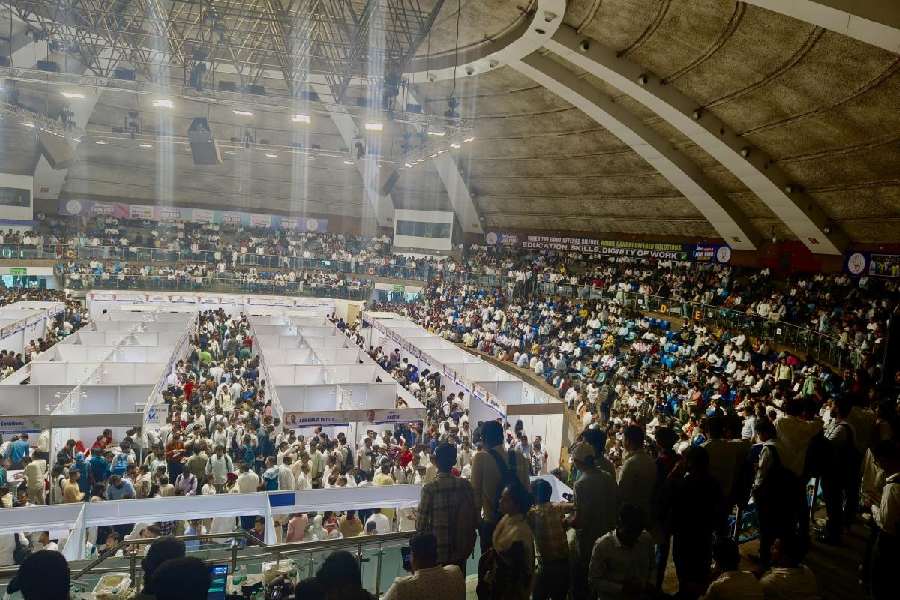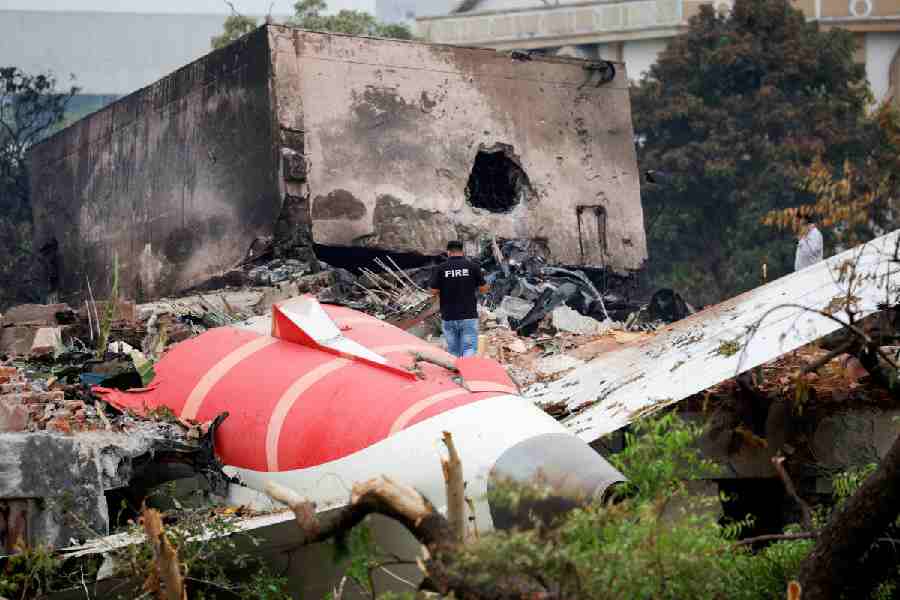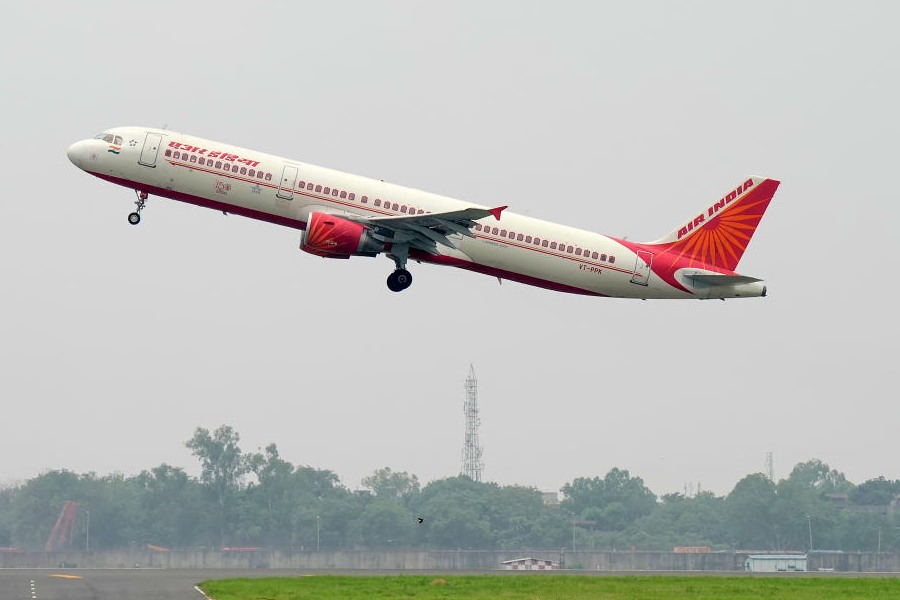 |
| An aerial view of the flood-affected areas of Madhubani in north Bihar. Picture by Deepak Kumar |
Patna, July 14: The official word is not yet out but irrigation engineers believe that the flood-inflicted destruction in north Bihar has broken the record of recent years, at least of a decade.
By now, whoever matters in the state has “surveyed”, the affected districts to support the government’s contention that the situation is grim and, therefore, the Centre needs to provide every possible support to help the flood-hit.
Today was the turn of chief minister Rabri Devi, followed by Union minister of state for water resources Jaiprakash Narayan Yadav. They, too, repeated the demand for more assistance from the Centre — in cash, kind and logistic support.
What is, however, strange is that the affected people have again been led to believe that the government, with help from a friendly regime in Delhi, is just about to wield the magic wand of constructing a high dam in Nepal over the Kosi river — known even now as the “sorrow of Bihar” — to provide a “permanent solution” to the annual problem.
This, when, core embankments to check the menacingly rising rivers from spilling over could breach at several points and when places like Samastipur, Darbhanga, Sitamarhi and Madhubani are struggling to cope with the raging waters.
Opinion among experts is acutely divided whether the construction of the high dam actually holds the key to addressing the flood situation in Bihar. “Remember, Kosi is only one of the rivers that causes havoc. At least seven other rivers — Ghaghra, Gandak, Burhi Gandak, Bagmati, the Adhawara group, Kamala and Mahananda — contribute to the destruction in good measure. Building a dam on the Kosi will not bring about a drastic change in the situation,” a senior irrigation engineer said.
Seven of these eight rivers originate in Bihar while Burhi Gandak, which emerges from a chaur in West Champaran, has most of its catchment area in Nepal. Estimates say that over 55 per cent of the country’s flood-affected people live in Bihar.
The Kosi high dam was proposed in 1937 and the demand was renewed in 1945. But the British rejected the scheme. The idea was again revived in 1947. By then the plan of embanking the Kosi had gained ground. In the later years the Kosi was eventually embanked.
“Since then politicians have been raking the issue of constructing a high dam in Nepal whenever a flood assumes serious proportions in the state. The embankments are projected as a stopgap measure, pending the construction of the big dam. But the dam is hardly a solution. Nearly 85 per cent of Kosi’s catchment area lies in Nepal,” the engineer said.
The embankments, too, have proved ineffective, mainly because the heavy silt has notched up the beds of the mighty rivers by several metres. The sluice gates too have been jammed to enable the release of floodwater.
The Central Water Commission today said the water level in most north Bihar rivers in spate is likely to marginally recede in the coming hours, though they would continue to flow well above the “danger mark”.
There is positive indications from the weather office too, which forecast “medium to light” rainfall in the catchment areas of rivers that have caused havoc in the northern districts of the state.
However, chief minister Rabri Devi, who undertook an aerial survey of the affected areas aboard an air force helicopter, described the situation as “very dangerous”.
The relief and rehabilitation department today said the flood has affected 16 districts. “This comprises 3,652 villages in 113 blocks with a population of 94.36 lakh. So far, 32 people and 17 cattle have died. As many as 1,432 boats have been deployed in flood relief work,” an official communiqué said. Unconfirmed reports from Darbhanga said at least 30 inmates fled from the town jail after water inundated its premises.










